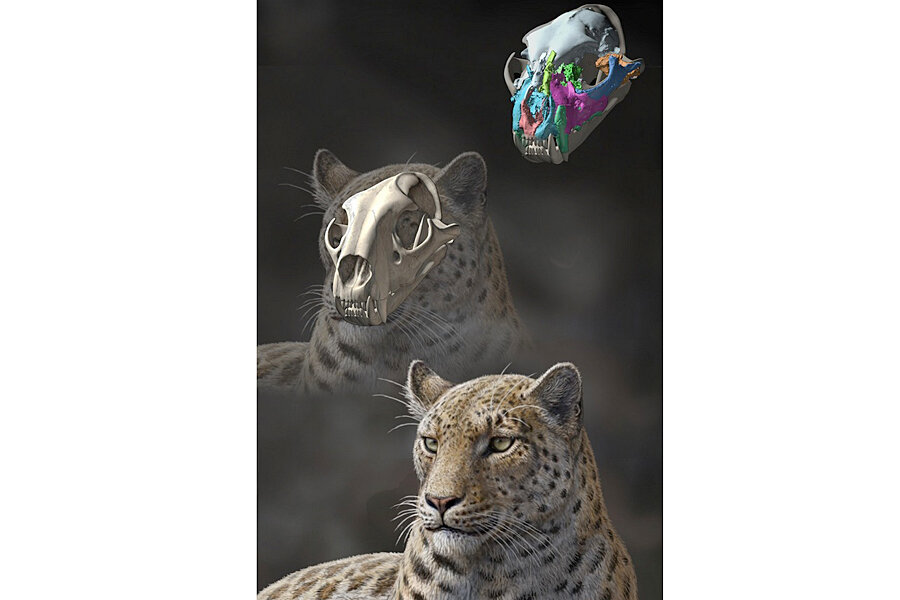Scientists in Tibet discover earliest known cat fossil
Loading...
The earliest known big cat lived in what is now China between 5.9 million and 4.1 million years ago, newfound fossils of the ancient prowler suggest.
The fossils, which were discovered on the Tibetan plateau, belong to a sister species of the snow leopard that prowls the Himalayan region today, said study co-author Zhijie Jack Tseng, a paleontologist at the American Museum of Natural History in New York.
The new study also reveals that all cats diverged about 16 million years ago, about 5 million years earlier than was previously thought. [See Images of the Oldest Big Cat Fossils]
Big cats
The group of felines known as "big cats" includes tigers, leopards, lions and jaguars, as well as snow leopards and clouded leopards. But exactly where and when they evolved hasn't been clear.
Tseng and his colleagues were excavating a rocky region of badlands in the Tibetan plateau in 2010 when they uncovered a fossil skull and one other bone that seemed to belong to a big cat. On return trips, they excavated five more specimens of the cat. [See Images of the Big Cat Fossils]
The team didn't know how old the fossils were, so the researchers looked at the orientation of magnetic minerals in the rock layers around the fossils. Because the Earth's magnetic poles have flipped at known points in geologic time, counting the number of times magnetic particles switch orientation in nearby rocks can reveal the approximate age of a fossil.
The team concluded the big cat was at least 4 million years old — a few million years older than some other ancient tiger fossils.
A detailed look at the anatomy in comparison with other living and extinct cats revealed the primeval cat didn't look too different from a modern snow leopard.
But this cat is by no means the first feline from which all other cats evolved. After combining an analysis of the fossil cat's physical features with genetic data — including some from a fossil cave lion — the team puts the origin of all cats (including housecats) somewhere around 16 million years ago.
"These fossils are the oldest, but they're by no means the most primitive," Tseng told LiveScience. "There is some big cat out there that has yet to be described."
The findings are exciting because they corroborate genetic estimates of when cats first emerged, and because the fossils were found near Central Asia, the area where most scientists believe cats first evolved, said Julie Meachen, a paleontologist at Des Moines University in Iowa, who was not involved in the study.
In addition, the cat skull came from a region where other fossils of mega-creatures have been found, suggesting perhaps this is the region where Pleistocene megafauna, including "big furry guys" such as wooly mammoths and rhinos, evolved, Meachen said. (Megafauna are large or giant animals.)
It's also fascinating how little cats have changed over the past several million years, she said.
"The reason they don't change is that they are so good at what they do that they don't need to change," Meachen told LiveScience. "They're just really effective killers of prey right from the get-go."
The cat fossil was described today (Nov. 12) in the journal Proceedings of the Royal Society B.
Follow Tia Ghose on Twitterand Google+. Follow LiveScience @livescience, Facebook & Google+. Original article on LiveScience.
- Here, Kitty, Kitty: 10 Facts for Cat Lovers
- Images: One-of-a-Kind Places on Earth
- Big Cats: Photos Reveal Elusive Jaguars
Copyright 2013 LiveScience, a TechMediaNetwork company. All rights reserved. This material may not be published, broadcast, rewritten or redistributed.







